#eindhoven university of technology
Text

Researcher creates mathematical models to advance smart polymer materials
Guido Kusters created mathematical models to aid in the development of smart polymers, and he defended his Ph.D. thesis cum laude at the Eindhoven University of Technology Department of Applied Physics and Science Education on May 29.
"It's very likely you've already used one or more smart polymers today," Kusters says.
"Like hair gel. That's soft and malleable when you squeeze it out of the tube, but once it's in your hair it gets hard so your haircut will remain firmly in place for the rest of the day. These materials are fundamentally soft, which is familiar from things like elastic bands, toothpaste, and any plastic packaging."
Read more.
#Materials Science#Science#Math#Polymers#Computational materials science#Modeling#Smart materials#Soft materials#Eindhoven University of Technology
11 notes
·
View notes
Text
Wood-Land 2024: Schloss Hollenegg für Design -Bewerbungsfrist bis 29.09.2023
Die für 2024 auf Schloss Hollenegg geplante Ausstellung “Wood-Land” wird sich mit Holz und Wald beschäftigen. Schloss Hollenegg for Design und Dutch Invertuals sind auf der Suche nach originellen Projekten, die in die Ausstellung aufgenommen werden sollen. Wir sind besonders an neuen Projekten interessiert, die konzeptionell und forschungsorientiert sind und Handwerk und Technologie erfolgreich…

View On WordPress
#Alice Liechtenstein#angewandte Kunst#Design#Designforschung#Designprojekt#Designstudiowettbewerb#Dutch Invertuals#Eindhoven University of Technology#forschungsorientiert#Handwerk#Handwerkskunst#Innovation#Inspiration#konzeptionell#Kunst#Kunsthandwerk#Schloss Hollenegg#Wood-Land
0 notes
Text
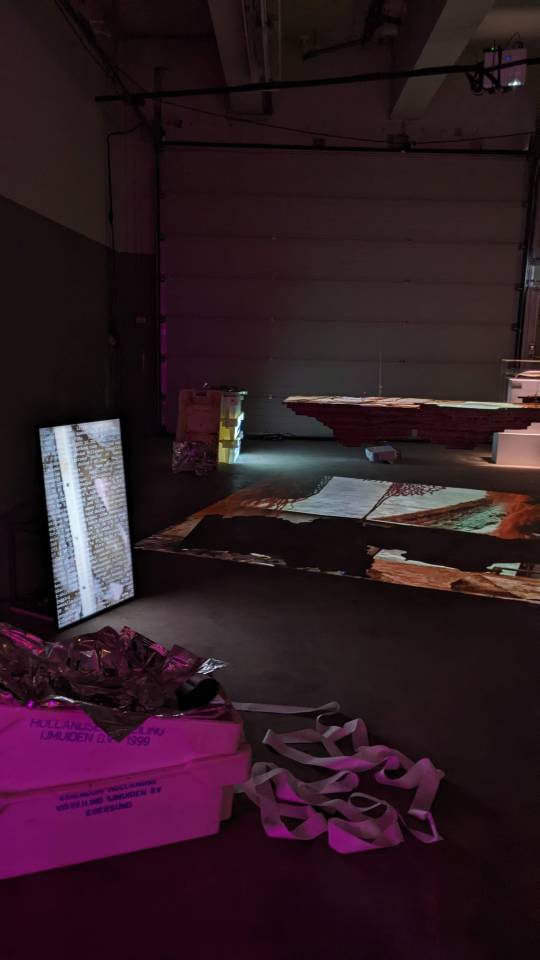








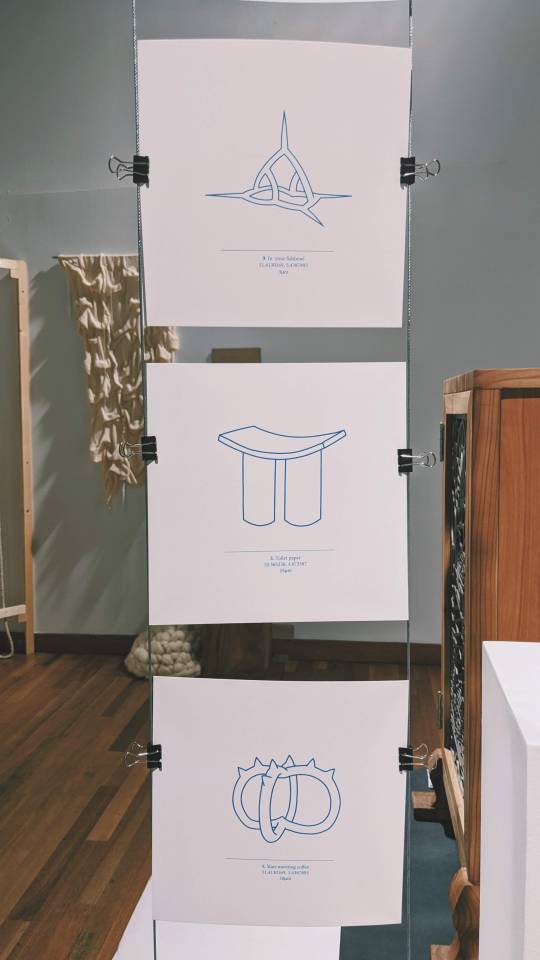




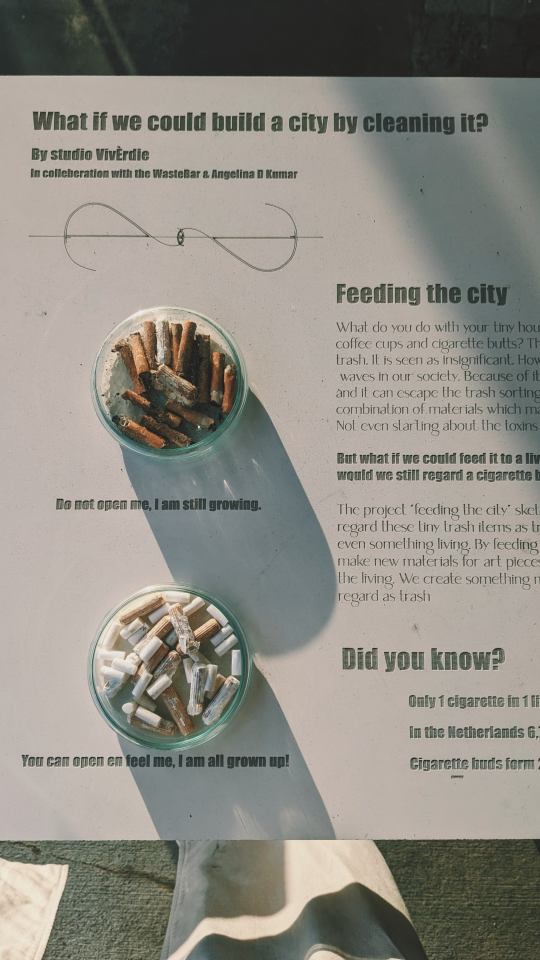


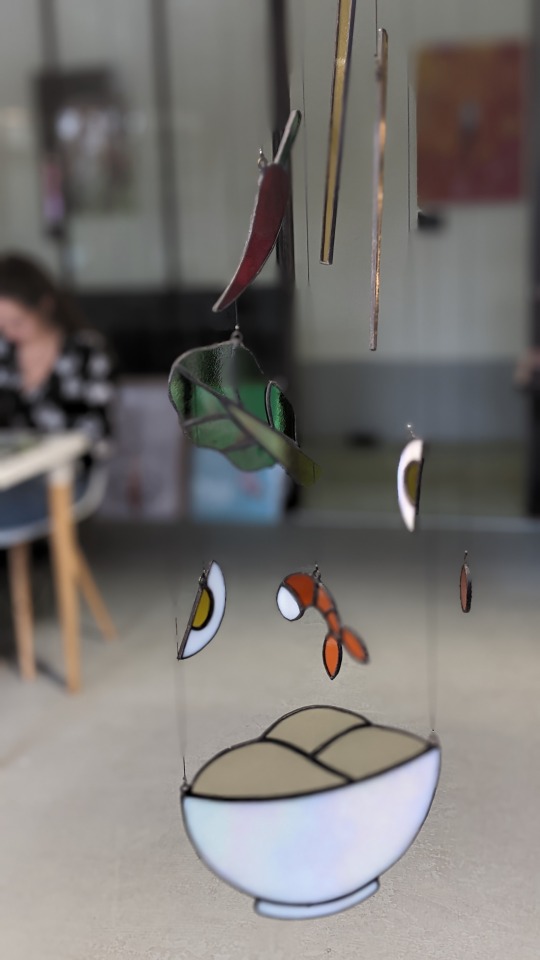


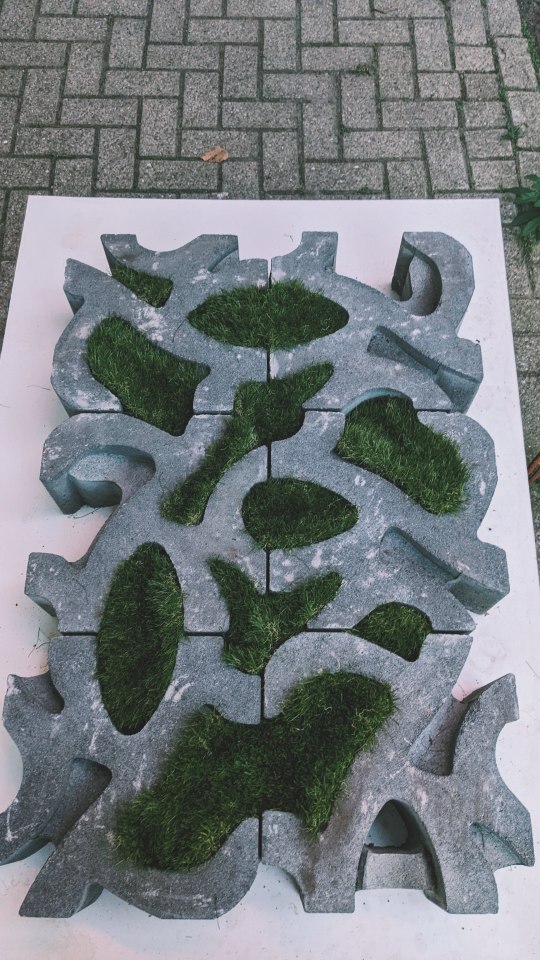


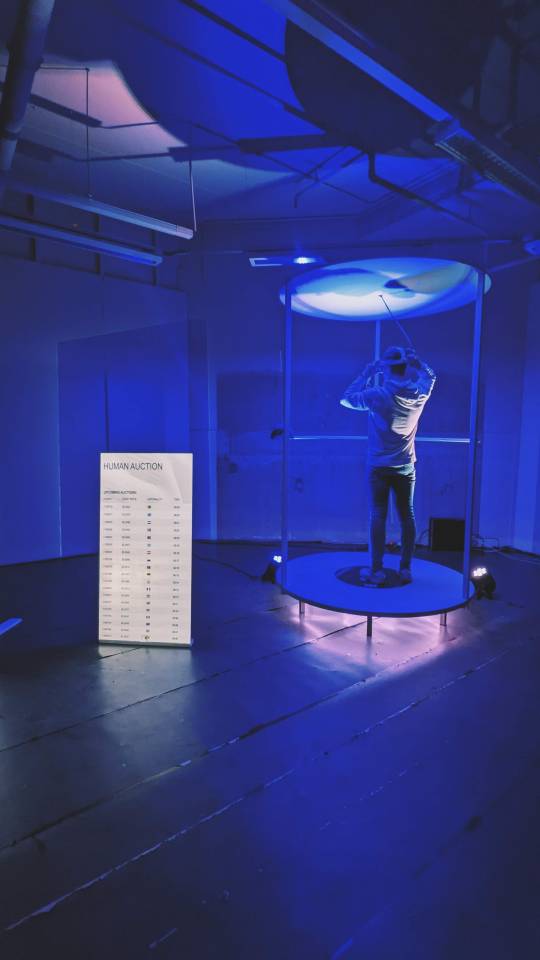
Dutch Design Week - Eindhoven 2022
Artists:
Brogen Berwick - Storied fish: From sea to plate
Esmee Muylwijk - PLASTIKOS
Anita Kruk - That Remains
Sane Ketelaar
Leonie Burkhardt - Woven Forms
Sophie Jungkvist - Woven Change, Shifting Expressions
Christine Snedker - Balls Form Knit
DAVID GRUNDEL - Kill yourself with love
Georgie Frankel - Imperceptible
Marian Genet
Jessy-Lee Esselink - Space as an entity
Studio VivErdic (VIVIAN ERDTSIECK) - What if we could build a city by cleaning it?
Madelief van Ewijk - Draagbaar plezier (Wearable Pleasure)
Iris Toonen - thinking hands
Studio Heilig - stained glass art
Envisions - More Than This
Park Positive - Slow Down Rainwater
Fontys ARTCODE - Because Metaverse
#ddw#dutch design week#eindhoven#dutch design#fine art#design#graphic design#technology#art#university art#design academy eindhoven
4 notes
·
View notes
Text









Queen Máxima visits the TUeindhoven (Eindhoven University of Technology) Hendrik Casimir Institute, which specializes in scientific research into photonics, among other things. A scientific discipline that can mean a lot for making data traffic more sustainable. Feb. 16, 2023.
📷 tue.nl
18 notes
·
View notes
Text
Researcher discovers promising new method for dealing with summer heat: 'It's a great solution to a major problem'
2 notes
·
View notes
Text
Li-Fi conference
*A solution in search of a problem.
27 June 2023, High Tech Campus Eindhoven & Online, The Netherlands
Dear Reader,
We are excited to announce the 3rd edition of the International LiFi Conference, a global event bringing together professionals from various industries to explore the potential of this revolutionary technology. The conference promises to be an exciting opportunity to learn about the latest advancements in LiFi technology and its applications across different sectors.
One of the unique features of LiFi is its potential to transform the way we connect to the internet and share data. The conference will cover a range of topics, including market development, the role of chipset manufacturers, electrical contractors, system integrators, and the telecom/datacom industry, including 5G. In addition, speakers will discuss LiFi applications in healthcare, military, education, industry 4.0/smart manufacturing, automotive, aviation (in-flight entertainment), virtual reality/mixed reality, retail, home, office, museums, and even space. Standardization and security in LiFi technology will also be addressed.
We are honored to have several renowned experts confirmed as keynote speakers, including Harald Haas, Distinguished Professor at the University of Strathclyde, John Joseph, CEO of OptiPulse, Anil Mengi, Corporate Vice President of devolo AG, Shelley Peterson, founder of Wizardwells, Benjamin Azoulay, President and CEO of OLEDCOMM, Markus Werner, Managing Partner of aeroLiFi GmbH, Theo Lazuech, CEO & Founder of LiNA, and many more speakers during the session by Light Communications Alliance.
Don't miss this opportunity to learn about the latest advancements in LiFi technology and its potential applications across various sectors.
Early Bird registration is open until May 10th, 2023. Register now to secure your spot at the conference.
We look forward to seeing you there!
LiFi for the telecom / datacom industry
LiFi, short for Light Fidelity, is an emerging technology that uses light waves to transmit data, rather than radio waves used in Wi-Fi. Unlike Wi-Fi, LiFi uses visible light, infrared or ultraviolet to transmit data, which h...
LiFi in space
LiFi, short for Light Fidelity, is a wireless communication technology that uses visible light instead of radio waves to transmit data. LiFi is based on the principle of Visible Light Communication (VLC), where LED lights are...
System integrators and LiFi
System Integrators play a critical role in helping businesses adopt new technologies and improve their operations. With the emergence of LiFi technology, System Integrators have an exciting opportunity to incorporate this cut...
Revolutionizing Industry 4.0 and Smart Manufacturing with LiFi Technology
As technology advances, so does the need for faster and more reliable data transfer in the manufacturing industry. This is where LiFi, or Light Fidelity, technology comes into play. LiFi uses light waves to transmit data at h...
Applications for Retail, museums and public spaces
Optical Camera Communications (OCC) is a technology that allows for high-speed data transfer through visible light. The technology is popular in various industries, including retail, museums, and other locations where reliabl...
LINCNET: Exploring the Synergy of LiFi and Powerline Communication for Industrial and Medical Applications
The LINCNET project aims to advance LiFi (Light Fidelity) technology as a viable alternative for industry-specific applications. By harnessing the unlicensed optical spectrum, LiFi offers higher data rates in confined areas, ...
6 notes
·
View notes
Photo


Through the Years → Queen Máxima of the Netherlands (1,363/∞)
16 February 2023 | Netherlands' Queen Maxima speaks with officials during a visit to the Eindhoven Hendrik Casimir Institute, part of Eindhoven University of Technology in Eindhoven. (Photo by Remko de Waal/ANP/AFP via Getty Images)
6 notes
·
View notes
Text
PhD on meta-optics mediated light-matter interaction
Eindhoven University of Technology
Fully-funded 4-year PhD in Optics & Photonic. Come join a very talented team of researchers at the heart of one of Europe's tech hub.
See the full job description on jobRxiv: https://jobrxiv.org/job/eindhoven-university-of-technology-27778-phd-on-meta-optics-mediated-light-matter-interaction/?feed_id=81931
#applied_physics #nanophotonics #optics #quantum_nanoscience #ScienceJobs #hiring #research
0 notes
Text
Holy Communion has been a part of many Christian ceremonies for centuries. This religious rite is often marked by bread and wine being shared with worshippers. But one variation of the ceremony has remained unchanged: holy communion being served in a milky form.
In 2013, a research team from Eindhoven University of Technology in the Netherlands began to examine why wheat flour was added to communion wine, giving it a milky appearance, in many churches. They found that this has been a practice since the middle ages.
While some might think this is simply a tradition carried on through the ages, the researchers found out it actually served a practical purpose. The milky communion is meant to be consumed during the communion ceremony and the wheat flour helps to protect the wine’s flavor.
The team discovered that wheat flour has the properties of a natural stabilizing and suspending agent. It prevents the wine from separating when it is stirred and it helps keep the flavor of the wine strong and well-maintained.
The team also determined that the milky communion was a significant improvement for the wine’s longevity. The cloudiness of the milky communion gives the wine an extra layer of protection from oxygen, which can oxidize and degrade the wine. The researchers also found that the milky communion has a better shelf-life than plain wine.
So there you have it—holy communion in a milky form has been around for centuries and it has actually been an ingenious engineering solution, helping to maintain the quality of the wine served in churches.
0 notes
Text

Are radical measures a good idea to attract more women to your organisation? The technology university in the Dutch city of Eindhoven thinks so. In 2019 it decided to open all academic job vacancies exclusively to women. If, after half a year, no suitable female applicant was found, men could apply. (via Hiring women, rather than just talking about it, works. That doesn’t mean all men are on board, it turns out | Renate van der Zee | The Guardian)
0 notes
Link
Deep learning has demonstrated remarkable success across various scientific fields, showing its potential in numerous applications. These models often come with many parameters requiring extensive computational power for training and testing. Resear #AI #ML #Automation
0 notes
Text
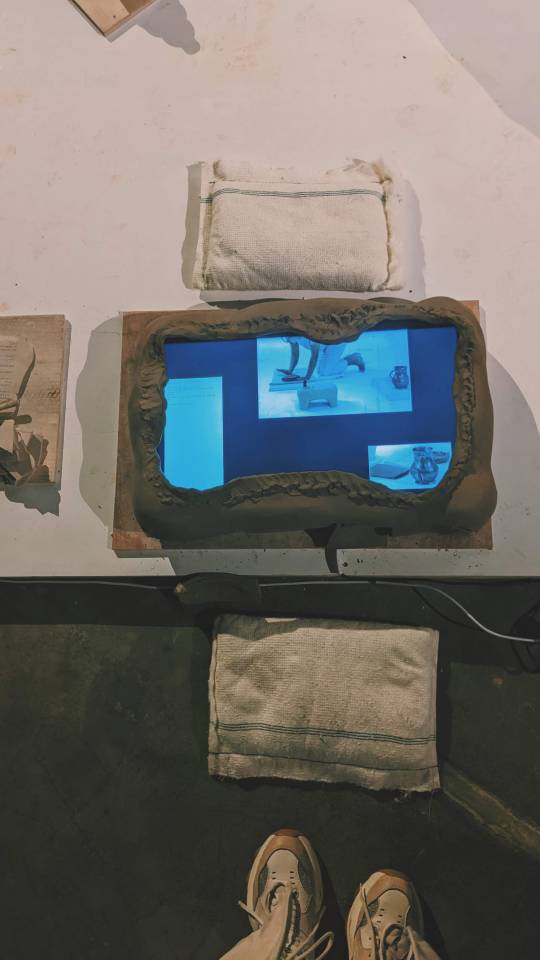








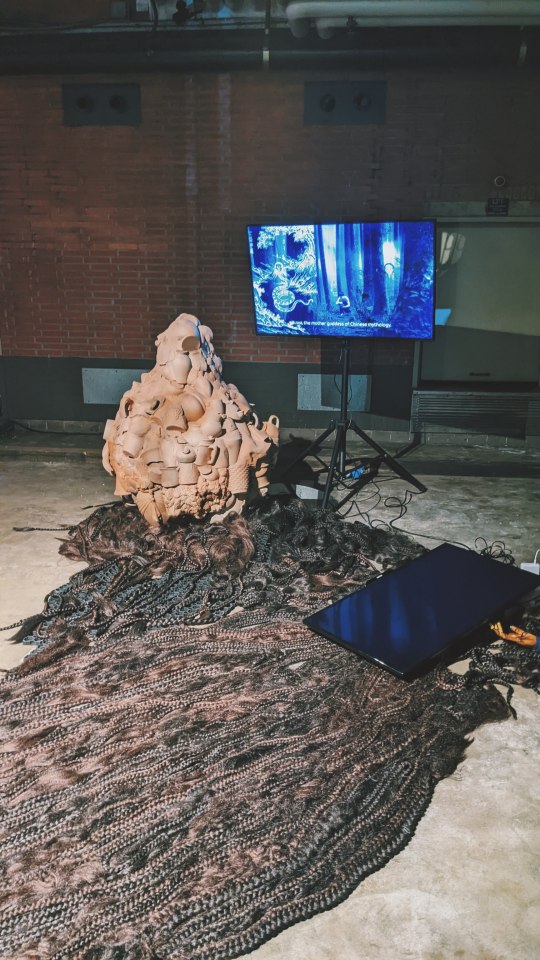

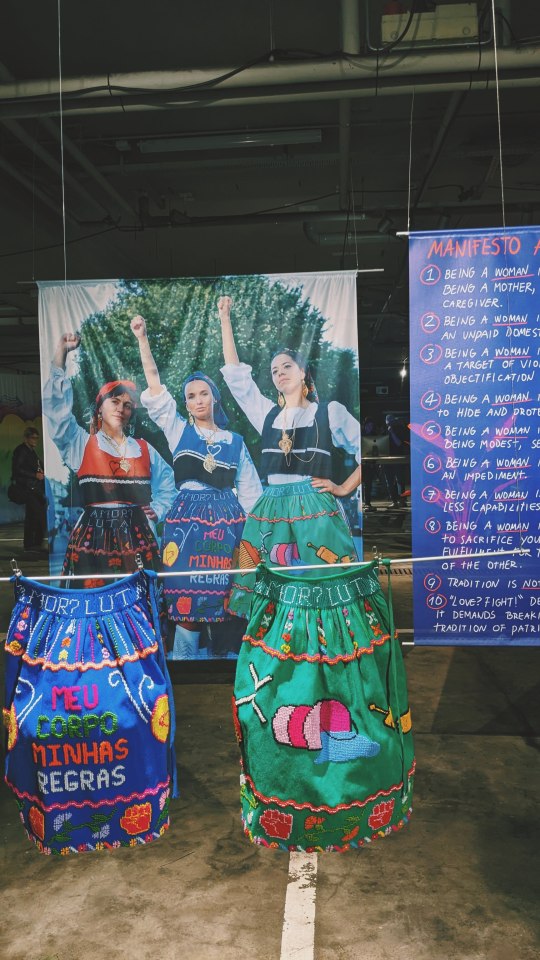
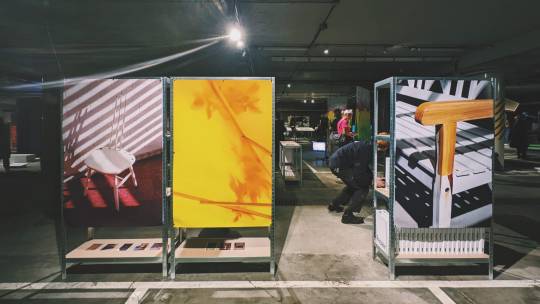
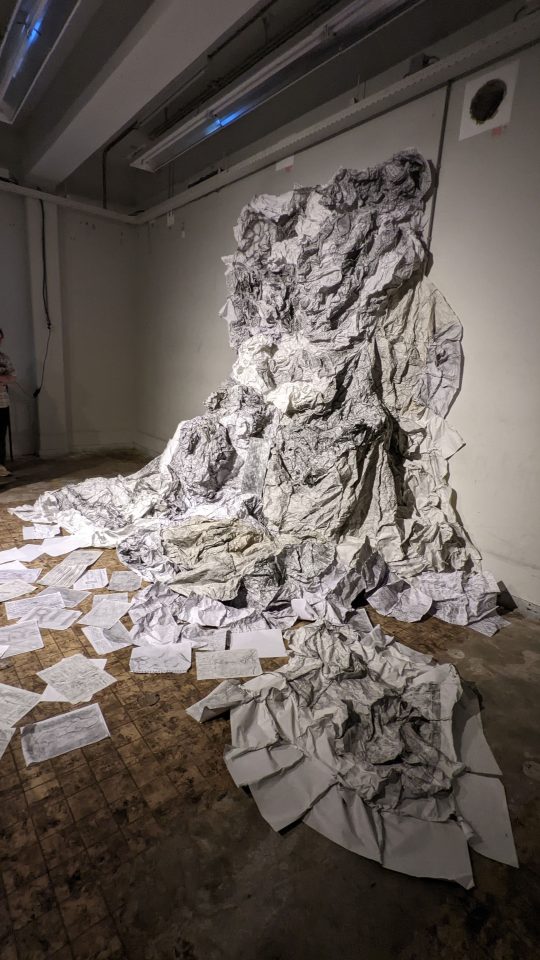

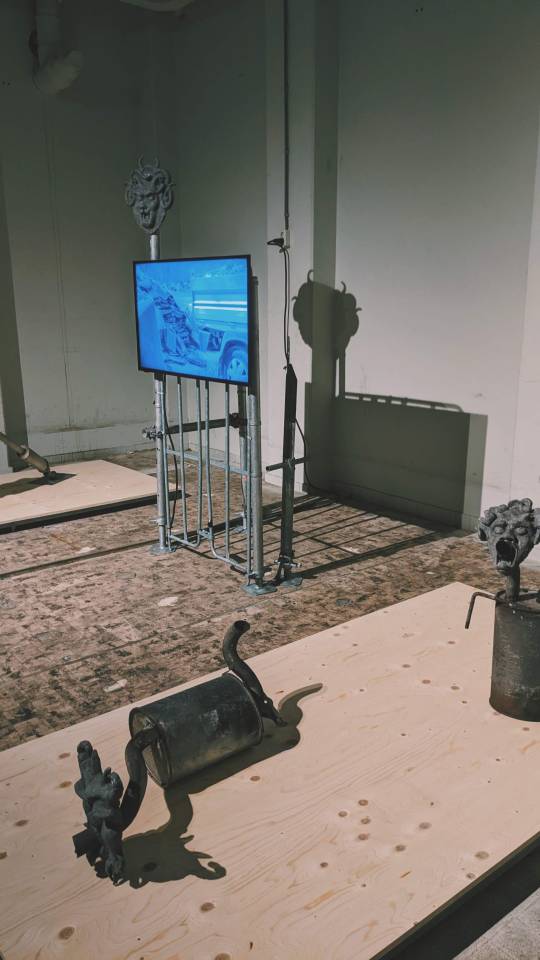
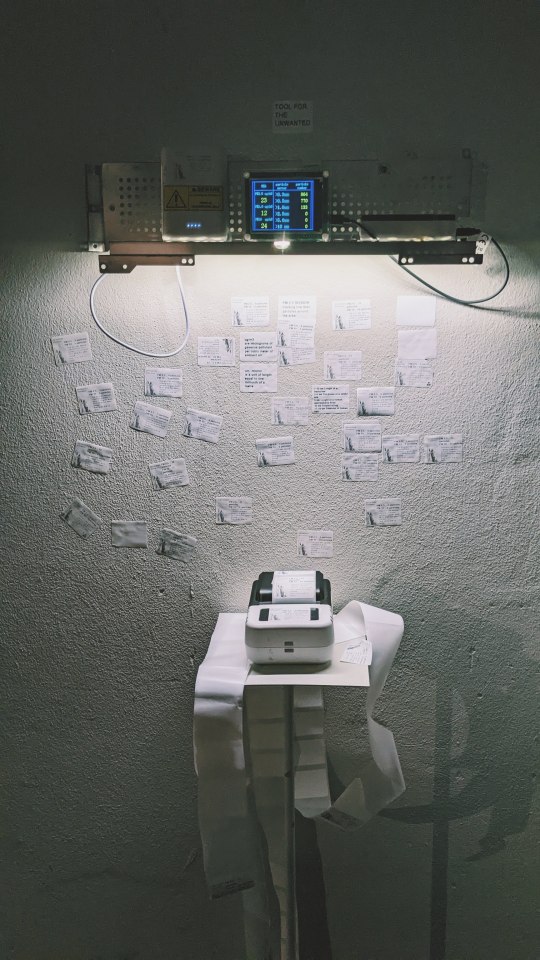
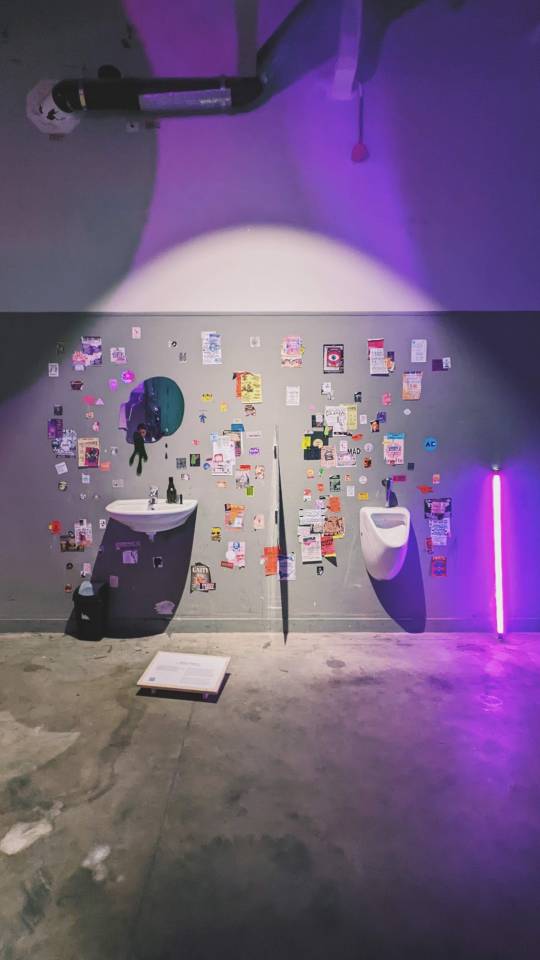

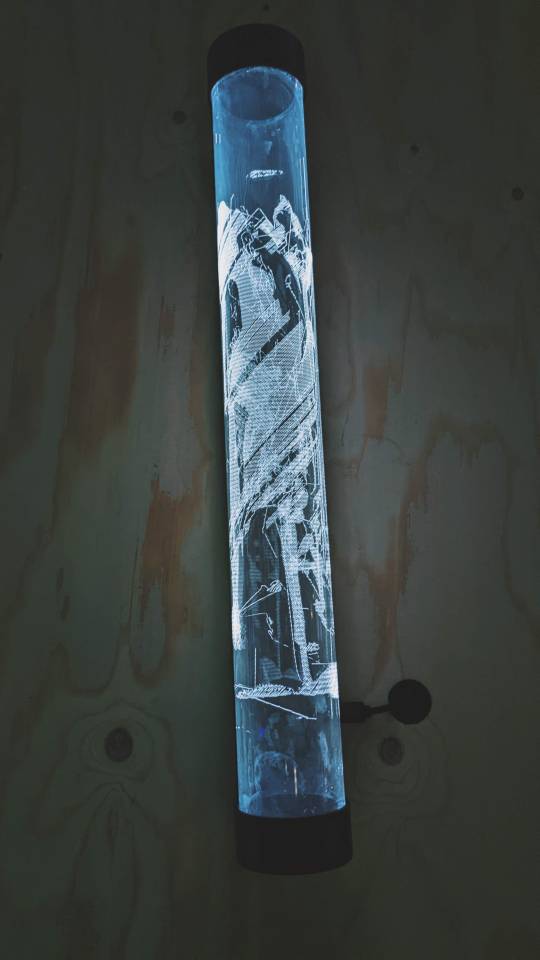

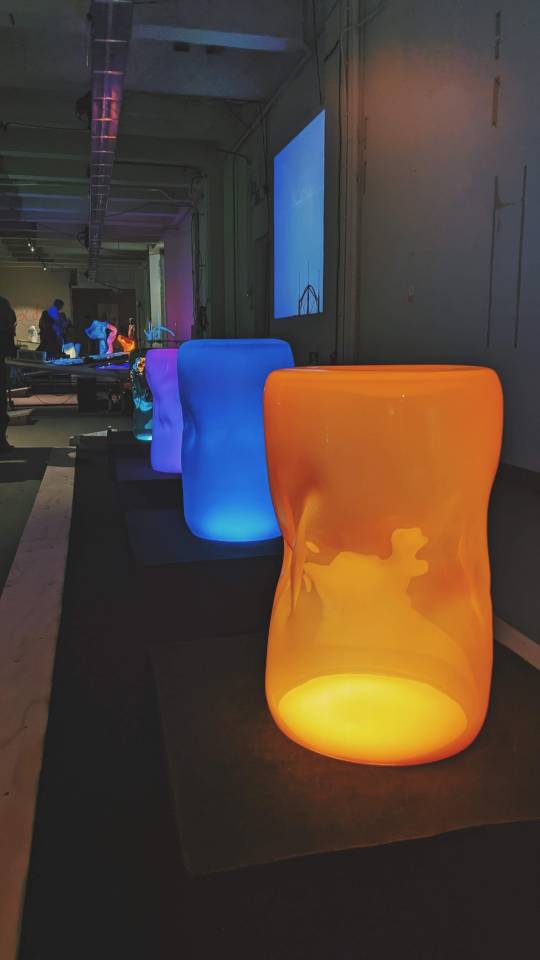
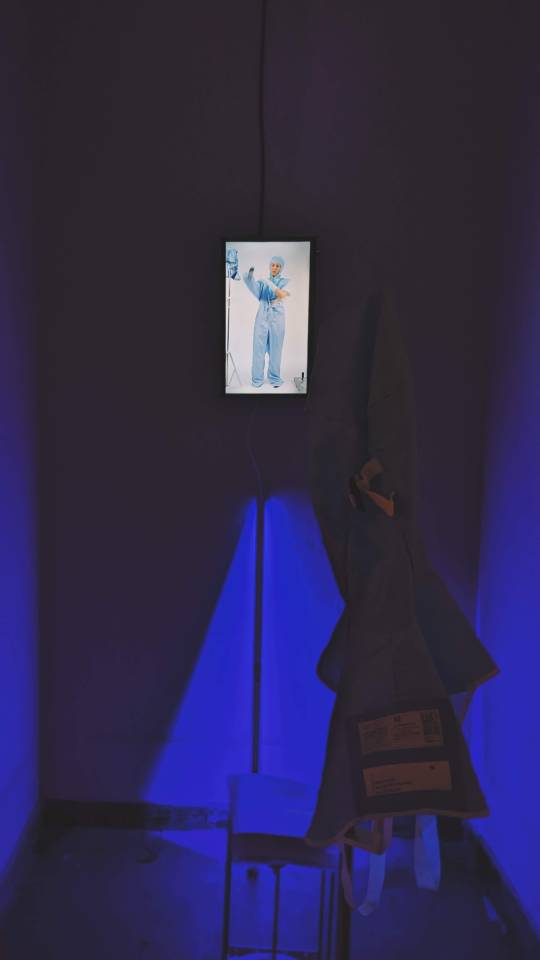
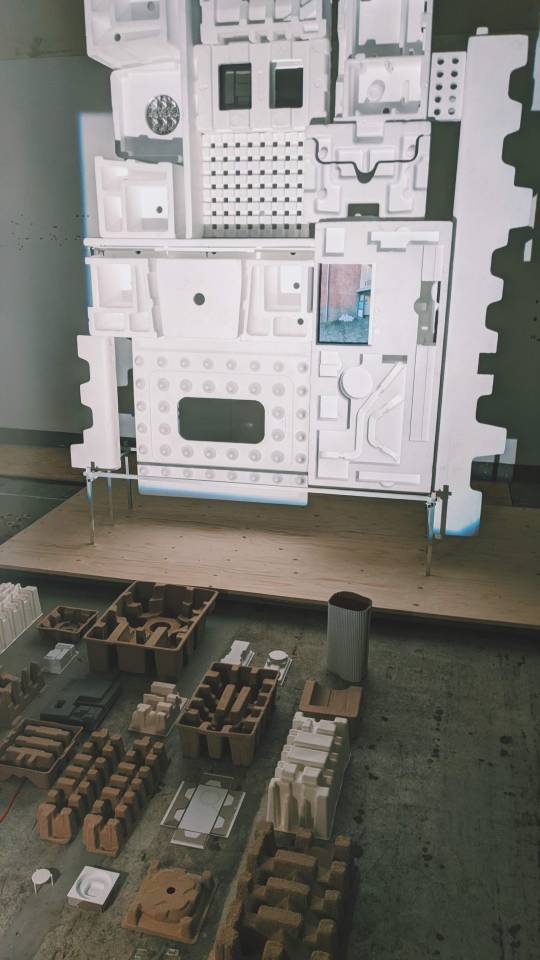

Dutch Design Week 2022 - Eindhoven
Design Academy Eindhoven @ Microtuin
Artists:
Karma Hamed - An Authentic Hybrid
Hyukjoon Choi - Where positivity is plugged in
Camila Capra Mesalle - No Function Only Meaning
Ana de Fontecha Hidalgo - Como llegar: How To Arrive
Metincan Güzel - Magical Nature of Diasporic Spaces
Alex Werth - The Hypermemetic Garden
Teresa Fernandez Pello - Spiritual Accelerationism
Te Yen Hsu - OMG
Sean Fisher - My Second Plane
Matilde Stolfa - Pialassa
Margarida Sintra Coelho Gonçalves - Amor? Luta! [Love? Fight!]
Ollee Means - The Guilder
Chen Yu Wang - Dis-assembling
Szu-Han Lin - Not leave but remain
Beatrice Maione - Shaped by Dust
Gaia D'Arrigo - The Myth of the CiucciaNebbia
Mabel Dapling - The Bathroom Confessional
Sangmin Oh - Knitted Light
Jibbe van Schie - Endless Etching
Hanne Arends - The Choker
Lara Bitter - A Room Full of…
Coline Gautier - Potato Shards
#ddw#dutch design week#eindhoven#dutch design#design academy eindhoven#fine art#technology#graduate art#university art
1 note
·
View note
Text
World's Fastest Data: A New Era of Speed and Efficiency

In February, deep within a warehouse at CERN, home of the Large Hadron Collider (LHC) – the world’s largest scientific experiment – two network engineers eagerly pressed a button. Instantly, text flashed on a screen before them, confirming success. “There was high-fiving involved,” recalls Joachim Opdenakker of SURF, a Dutch IT association serving educational and research institutions. “It was super-cool to see.”
Opdenakker and his colleague Edwin Verheul had established a new data link between the LHC in Switzerland and data storage sites in the Netherlands, achieving speeds of 800 gigabits per second (Gbps) – over 11,000 times the average UK home broadband speed. This link is designed to enhance scientists’ access to LHC experiment results.
A subsequent test in March, using specialized equipment from Nokia, confirmed the desired speeds were attainable. “This transponder that Nokia uses, it’s like a celebrity,” says Verheul, noting the high demand for the equipment. “We had limited time to do tests. If you have to postpone a week, then the transponder is gone.”
While this bandwidth approaches one terabit per second, it is not the fastest; some subsea cables, using multiple fiber strands, achieve speeds several hundred times greater.
In laboratories worldwide, networking experts are developing fiber optic systems capable of transmitting data at astonishing speeds, reaching many petabits per second (Pbps), which is 300 million times faster than the average UK home broadband connection. The potential applications for such immense bandwidth are still being explored, but engineers are focused on pushing these limits even further.
The duplex cable from CERN to data centers in the Netherlands spans nearly 1,650 kilometers (1,025 miles), traveling from Geneva to Paris, Brussels, and Amsterdam. Achieving 800 Gbps over this distance involves overcoming the challenge of maintaining the power levels of light pulses, which requires amplification at various points along the route, as explained by Joachim Opdenakker.
Every collision of subatomic particles at the LHC generates about one petabyte of data per second, enough to fill 220,000 DVDs. While this data is condensed for storage and analysis, significant bandwidth is still necessary. With an upgrade expected by 2029, the LHC anticipates producing even more data.
“The upgrade increases the number of collisions by at least a factor of five,” says James Watt, senior vice president and general manager of optical networks at Nokia.
The current speed of 800 Gbps may soon seem slow. In November, researchers in Japan set a new world record for data transmission, achieving an astounding 22.9 Pbps. This bandwidth could provide every person on Earth, and then some, with a Netflix stream, according to Chigo Okonkwo of Eindhoven University of Technology, who was involved in the research.
This experiment involved sending a vast stream of pseudorandom data over 13 kilometers of coiled fiber optic cable in a lab. Dr. Okonkwo explains that the integrity of the data is analyzed after transfer to ensure it was transmitted quickly without accumulating excessive errors. The system used multiple cores—19 in total—inside a single fiber cable, a new type of cable unlike the standard ones connecting many homes to the internet.
But replacing older fiber optic cables is costly and challenging. Extending their lifespan is beneficial, according to Wladek Forysiak of Aston University in the UK. Recently, he and his team achieved speeds of approximately 402 terabits per second (Tbps) over a 50km optical fiber with a single core. This speed is about 5.7 million times faster than the average UK home broadband connection.
“I think it’s a world best; we don’t know of any results that are better than that,” says Prof. Forysiak. Their technique involves using more wavelengths of light than usual for data transmission. This method relies on alternative forms of electronic equipment to send and receive signals over fiber optic cables, potentially making it easier to implement than replacing thousands of kilometers of cable.
Martin Creaner, director general of the World Broadband Association, suggests that activities in the so-called metaverse might one day require such extreme bandwidth. His organization predicts that home broadband connections could reach up to 50 Gbps by 2030. However, reliability may be even more crucial than speed for certain applications. “For remote robotic surgery across 3,000 miles, you absolutely do not want any scenario where the network goes down,” Creaner emphasizes.
Dr. Okonkwo points out that training AI will increasingly necessitate moving large datasets quickly, arguing that faster data transfer will be advantageous. Ian Phillips, who collaborates with Prof. Forysiak, adds that once bandwidth becomes available, humanity finds ways to utilize it: “Humanity finds a way of consuming it.
Although data speeds of multiple petabits per second far exceed current web user needs, Lane Burdette, a research analyst at TeleGeography, notes the rapid growth in bandwidth demand. This demand is increasing at about 30% per year on transatlantic fiber optic cables. She highlights that content provision—such as social media, cloud services, and video streaming—now consumes much more bandwidth. “It used to be around 15% of international bandwidth in the early 2010s. Now it’s up to 75%. It’s absolutely massive,” she says.
In the UK, significant improvements in internet speeds are still needed, as many people lack access to sufficiently fast broadband at home. According to Andrew Kernahan, head of public affairs at the Internet Service Providers Association, most home users can now access gigabit-per-second speeds. However, only about a third of broadband customers are opting for such technology. He points out that there isn't currently a "killer app" that necessitates such high speeds, though this might change as more TV is consumed via the internet.
“There’s definitely a challenge to get the message out there and make people more aware of what they can do with the infrastructure,” Kernahan says.
Read the full article
0 notes
Text
Lex Hoefsloot: Renewable Automotive Alternative with Solar EVs at Lightyear
You know how people and children walking and playing on streets and lanes used to know when a vehicle was going to pass by because of their loud and unique sounds? Yes, that used to be an indication of oncoming motorists and trucks which had loud sounds coming from their exhausts as they got nearer and when they passed by.

But with electric vehicle innovation, electrically powered automobiles and bikes cut down on their loud sound pollutants and give a smooth, low, and soft buzzing sound as the riders and drivers whizz past. Sometimes, you wouldn’t even know a bike or car passed by if it was electrically powered. EVs also cut down on a lot of carbon emissions that are produced by fueled vehicles in the drive toward sustainable mobility solutions.
The environmental impact of transportation from the increasing use of Electric Vehicles in the world today estimates green and bright futures in a few more years of consistent and growing use by more and more people. The innovations and creativity made and put together in the automotive and manufacturing industries to improve sustainability initiatives and environmentally conscious actions, provide us with better advancements in electric mobility by reducing several negative impacts that are detrimental to the ecosystem and biodiversity.
Therefore in this article, we will be sharing insights into one such start-up company in the Netherlands called – Lightyear, founded and led by Lex Hoefsloot, is an automotive company that manufactures the first-ever scalable, grid-independent, and long-range solar electric vehicle as an improved and upgraded renewable alternative solution to other power-consuming EVs and fuel-consuming vehicles. On a mission to – “bring clean mobility to everyone, everywhere”, Lightyear aims to cover the world’s combined car driving distance of a Lightyear with their Solar EVs by 2035.
About Co-Founder and CEO – Lex Hoefsloot:
The Co-founder and Chief Executive Officer of Lightyear is Lex Hoefsloot. Having received both a Bachelor’s Degree in Mechanical Engineering and a Master’s of Science Degree in Engineering and Automotive Technology from the Eindhoven University of Technology, Lex has a good background, learning, and experience working around automotive and related technological facets.
“I strongly believe that technology should be used for the right purposes……….to directly change the world’s biggest problems. We are not alone. Technology is here to give us a hand.” – Lex Hoefsloot, Co-Founder and CEO of Lightyear.
Lex has good work experience and career from working in varying positions such as – A Member of the Automotive’s Publicity Team at the university where he studied, the Owner of Hoefsloot Web Design, the Co-Founder and Team Manager at Solar Team Eindhoven, the Co-Founder and Project Manager at Blue Jay Eindhoven, and finally Lex founded Lightyear which he is also the CEO at.
About LIGHTYEAR:
Lightyear was founded in the year 2016 by Co-founder – Lex Hoefsloot. The co-founder and his team of experienced, skilled, and talented workforce members have created the 1st electric car that charges itself through sunlight with integrated solar cells. Established in Europe, Lightyear’s headquarters is located in Helmond, Netherlands.
Mission Statement – “To bring clean mobility to everyone, everywhere.”
“Good for the planet and Good for you”, Lightyear is a powerful sustainable mobility vehicle. As the world is transitioning to electrically-powered vehicles and renewable energy resources to create and lead comfortable and sustainably green futures, there is still the huge consumption of energy and power grids. This would again create a cycle where we would need to decrease the usage of the power consumed. Therefore, as an alternative mobility solution for other power-consuming EVs and fuel-consuming vehicles, Solar Electric Vehicles have been made.
This Solar-powered EV by Lightyear addresses many socioeconomically present challenges. The automotive industry plays one of the bigger parts that contributes to adverse climatic changes, haggard power grids, and energy-generating dilemmas. In response to this, Lightyear has manufactured and designed solar integration in automobiles that can go off-grid. This means that the dependencies in regularly charging electric vehicles through sockets and plug points are reduced. Renewable energy such as solar can now be harnessed by 5 sq. ft of solar cells that charge on the go, allowing one to drive for months after their last charge.
Lightyear shares numbers saying that around 9,460, 000,000,000 kilometers of combined car travel is made in one year alone. This is the distance of a Lightyear. Hence the name Lex Hoefsloot chose as he envisions and aims to cover the world’s combined car driving distance of a Lightyear with their clean, green, and scalable Solar EVs by 2035. The company has since achieved a global reach of 20 billion with 4 world solar companionships. Using sustainable materials such as recycled carbon fiber body panels in the exterior body and naturally sourced materials for their vegan interiors, Lightyear’s solar EVs turn wheels and heads as drivers of sustainable, innovative creators of positive change, as they continue to industrialize their idea of offering clean and renewable mobility for all.
Visit More : https://theeuropeentrepreneur.com/lex-hoefsloot-renewable-automotive-alternative-with-solar-evs-at-lightyear/
0 notes